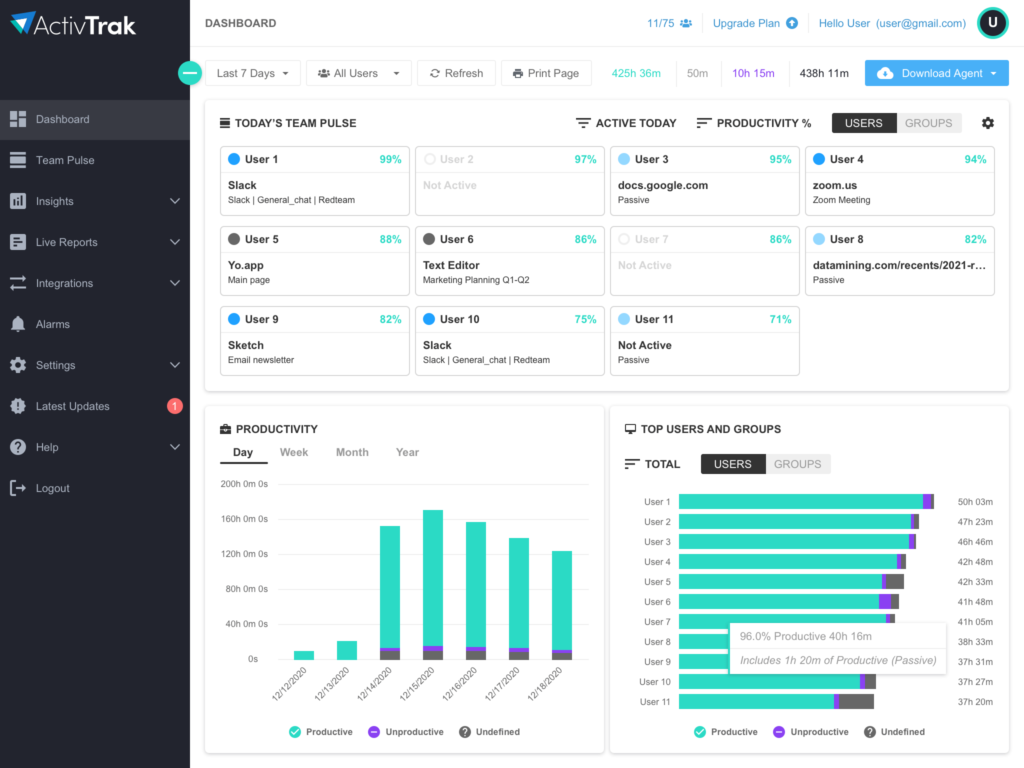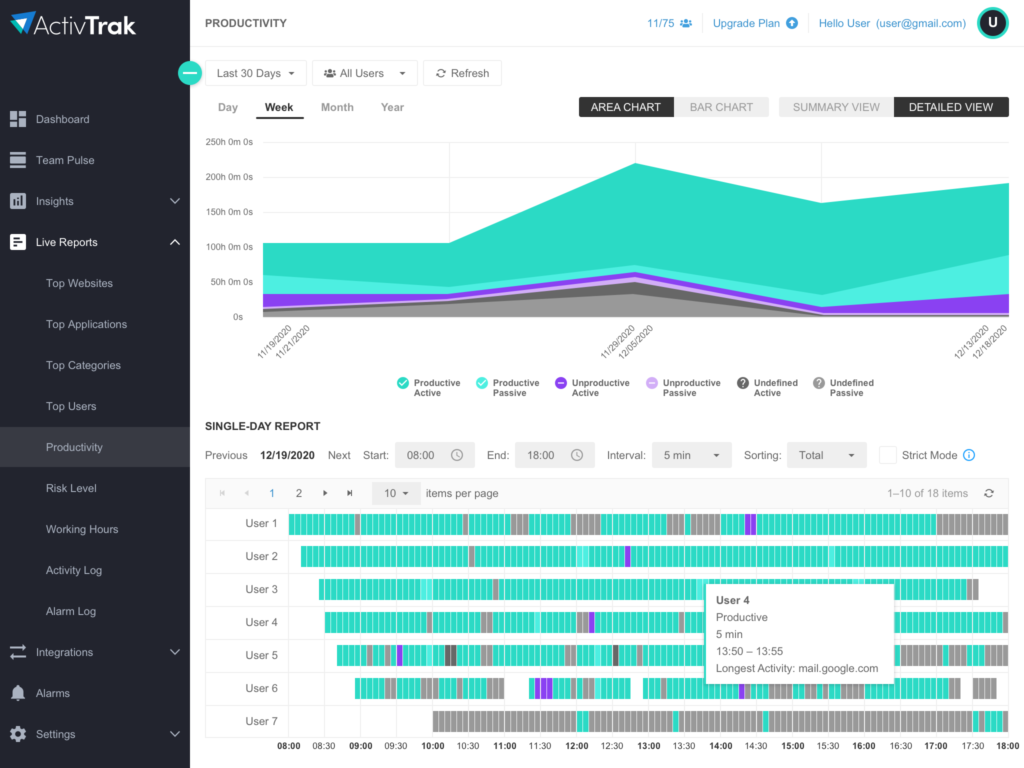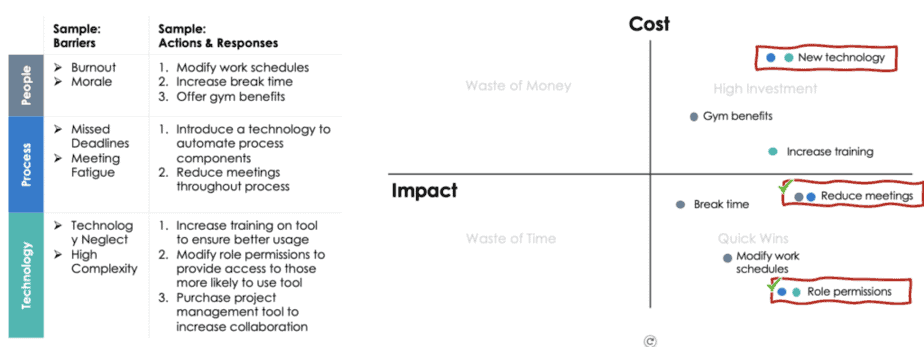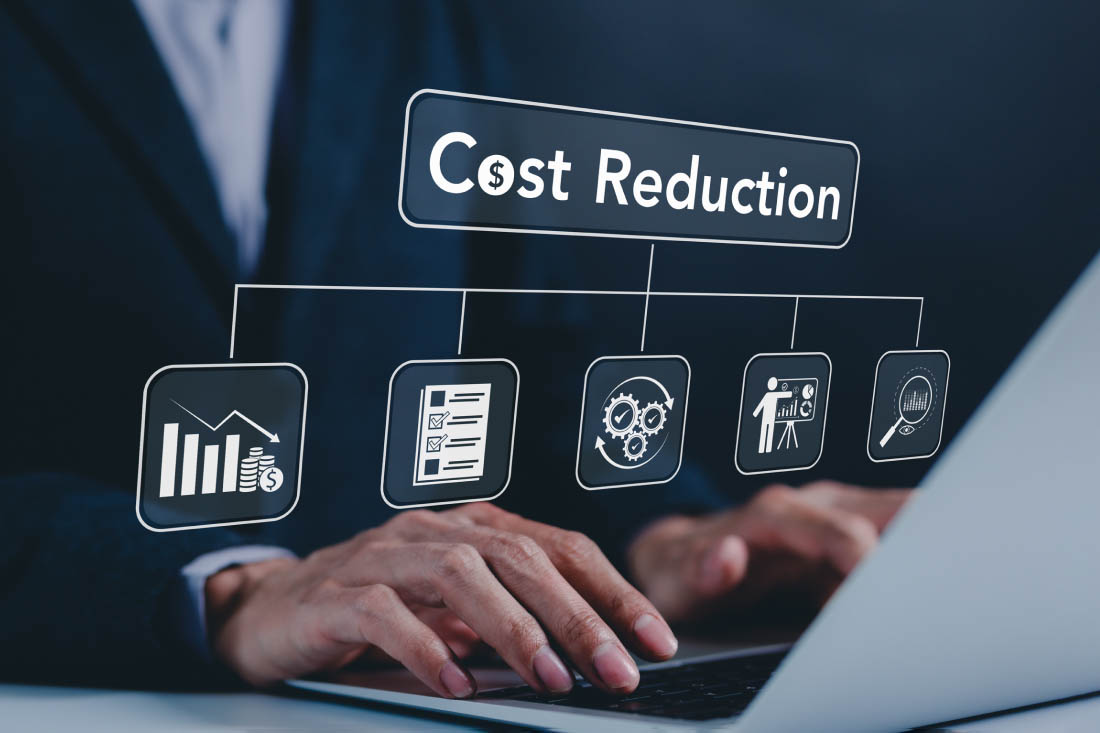As a longstanding student of workplace productivity and performance, and now Head of ActivTrak’s Productivity Lab, I’ve appreciated productivity’s re-emergence to the forefront of business leaders’ minds over the past year. While the digital transformation has been underway for some time now, the massive, global shift to remote work in 2020 was both unexpected and rapid.
Workforce productivity, at one time, was rather straightforward. Mainly discussed in terms of manufacturing such as the number of automobiles rolling off assembly lines, it has since evolved as a way to measure both the tangible and intangible outputs and inputs of an increasingly diverse world of work.
The assets developed in the digital age are being put to the test. We wonder—Are the applications on our phones, computers, and tablets enabling our productivity, or are they standing in the way? Has technology automated tedious tasks in order to free up space in our day to focus on the more critical ones? Are we distracted and overwhelmed by the variety of tools at our fingertips? Have the tools become hindrances; decreasing our attention spans, increasing our multi-tasking time, and exhausting our minds?
Every business, regardless of size, industry, or geography, must recognize the importance of productivity. In this article, I’ll walk you through what productivity means in today’s modern workplace including defining what productivity is, the importance of measurement, and how you can start improving it.
What is productivity?
In its most simple form, productivity is a ratio. It measures outputs to inputs. Productivity is the degree to which outcomes are efficiently achieved through maximizing inputs.
Outputs tend to vary by industry. What one industry produces and sells in the marketplace differs from the next. Take the restaurant industry, for example. In this scenario, productivity outputs are measured by the number of meals served. In contrast, productivity outputs in the software industry are measured by agile sprints and cloud-based software deployments.
When we look at productivity within a particular business, each team has unique deliverables and contributions (outputs) required of them by the organization. Outputs differ, and as such, so do their inputs.
Inputs, as opposed to outputs, have a lot more in common across all industries. Productivity inputs, or as I like to refer to them, productivity enablers, can be categorized into three major classifications: People, Process, & Technology.
All businesses leverage people, process, and technology to create outputs. How they do this, efficiently or inefficiently, is what drives the quality of their productivity. For this reason, focusing on your productivity enablers allows you to unlock hidden productivity potential you may have never known existed.
Productivity enablers drive your output and thus, your organization’s productivity. Therefore, we focus our time studying enabler indicators to better understand where improvement opportunities exist. We’ve been measuring output for years, but measuring productivity enablers has proven to be the missing piece in understanding productivity improvement.
How to define productivity in your organization
To define productivity in your own organization, begin with your outputs. What does your organization produce or provide to the marketplace? How does each team contribute to the organization? Your outputs will guide you as you pinpoint your critical productivity enablers, those inputs that contribute to output production.
Next, evaluate your People. Key questions to ask include:
- Is your workforce engaged?
- Is strain and fatigue being addressed?
- Are employees focused?
- Are employees working on the right activities?
- Are employees capable and trained?
From here, shift your attention to Process and explore further how your processes contribute to your outputs today including:
- Are my processes streamlined and efficient?
- Where do process bottlenecks exist?
- What’s causing bottlenecks?
- Is there space to innovate and improve upon processes?
Lastly, you must evaluate Technology to better understand how tools support both people and process. Questions to consider:
- Is technology enabling organization, collaboration, and automation?
- Is technology being adopted across the organization?
- Is training for technology sufficient?
How to measure workforce productivity
Productivity enablers require consistent measurement. Influences on people, process, and technology are ever-changing. Take today’s environment, for example. There is very little in common between people’s work schedules, demands, and focus in October 2019 compared to now, October 2020. According to Gartner, 88% of businesses worldwide made working from home mandatory in the wake of COVID-19. As such, work schedules have been forced to modify and accommodate at-home schooling, living rooms have transformed into workspaces, and many employees have struggled to focus without the structure of a traditional office.
In physical work environments, processes were often kept in motion during informal hallway conversations or morning syncs. With the convenience of impromptu office exchanges removed, processes now take on new shapes and directions, putting consistency and quality at-risk. With distributed work as prevalent as ever, organizations must find a way to measure the health of enabler indicators on an ongoing basis to identify where actions and responses are necessary.
Historically, engagement surveys, town hall feedback, and focus groups have been a driving force in organizations’ pursuit of improved productivity. These tactics require employees to self-report in key areas such as workplace culture, training availability, and technology solutions, and they are typically conducted as infrequently as once a year. Relying on this type of productivity measurement and feedback puts your organization in jeopardy of having very limited insight into key productivity enablers. Solely referencing self-reported forms of measurement to assess your workforce productivity in today’s business climate is inadequate.
Leveraging workforce productivity technology
To get a true measurement of your workforce productivity, you must incorporate digital workforce analytics. Leveraging productivity monitoring software allows you to track those things you cannot see, also known as progressive analytics.
Productivity technology is the way of the future as it pertains to baselining current levels of productivity, identifying opportunities to improve it, and participating in ongoing measurement and analysis to ensure continuous improvement. At ActivTrak, we leverage our own workforce analytics tool to provide team leaders and employees with data insights around key enabler indicators such as:
People:
- What is the current burnout risk?
- Are people effectively working together? How is our collaboration?
Process:
- Are people engaged in too many meetings; struck by meeting fatigue?
- Are people struggling with process bottlenecks?
Technology:
- Are employees using our technology? What is our rate of technology adoption?
- Do people know how to use our tools? What is our training effectiveness?
Most employees want to be productive, but lack the visibility, skills, or support to optimize their productivity at work. By using insights from productivity monitoring software in a transparent way with employees, managers can use objective data to educate and guide employees towards more productive work patterns.

ActivTrak’s intuitive interface makes establishing productivity baselines simple and identifies performance gaps with ease. Without guessing, managers will clearly see where employees are focusing their attention and how much time they are spending on each task and project. Managers can also pinpoint process bottlenecks and distractions that are holding team members back. Leadership teams learn which apps, software, and workflows perform best and where there may be room for improvement. Simply put, you’ll be able to see what is working in service of your productivity, and what is not.

Analyzing individual and team productivity using technology can uncover success patterns, facilitate better alignment of talent, and create a more efficient distribution of resources. Taken together, these actions by leaders can and should improve productivity across the entire organization.
How to improve your workforce productivity
Once you’ve benchmarked and measured your productivity, you must now turn your attention to transforming that data into decisions. I recommend beginning with brainstorming solutions, not alone– but with your workforce.
When it comes to improving productivity measurement, it’s important to remember that valuable outputs require quality inputs, which include your people, process, and technology. To improve productivity, you must analyze inputs to uncover areas of opportunity and assess the impact of your decisions on productivity.
As we’ve already discussed, measuring your inputs via feedback surveys alone is not enough. I, along with other management scholars, recommend employing progressive analytics to analyze productivity inputs in order to avoid the inaccuracies of self-reporting, an overreliance on manager observations, and most importantly, to garner insights you otherwise would not be able to see without the assistance of technology.
Engaging your workforce in discussions not only promotes trust and transparency, but it also generates buy-in for your productivity journey. Employees are able to validate the data in your productivity tool, providing further context and enabling them to suggest actions that will likely modify behavior and thus, make a positive impact on productivity.
From there, leadership is able to devise a solution set– a series of potential actions and responses intended to improve productivity for your organization. Solution sets contain the wide range of potential actions from which leaders can consider, prioritize, and select to take to make productivity improvement progress.
Solution sets can be evaluated on a matrix that assesses cost and impact as key factors in the prioritization process. As reflected in the example below, introducing a new technology can serve both process and technology enablers. Certain actions can solve multiple productivity barriers; these should be prioritized and considered your “quick-wins.”

After taking action on your solution set to improve key enablers surrounding People, Process, and Technology, it is critical to measure again. Only through continuous measurement are you able to evaluate the success of your productivity improvement efforts. Where responses generate positive impacts in your data, you are likely to see productivity improvement in your workplace. Where actions and responses fail to show improvement, you’re immediately able to intervene with either engaging the workforce for feedback or implementing more impactful responses to support the organization in unlocking its potential.
At ActivTrak, we use our productivity tool to continuously monitor the trends found in our enabler indicators for this very reason. Over time, trends in our data and reports reveal the success of our productivity improvement efforts. For us, being able to see that our calculated actions have empowered our employees to work smarter has proven to be essential to our business’ overall productivity and performance as evidenced by our outputs.
I can’t emphasize enough that improving productivity is not a one-time endeavor. Rather, it is an ongoing process that involves continuous measurement, analysis, and action by leadership and employees collaborating together.
Adopting a productivity mindset
Workforce productivity and performance have become mission-critical and thus will continue to be a top priority for business leaders well into the future. While COVID-19 has certainly expedited the need to measure those things we cannot see, we must recognize that the world of work was already in the midst of a colossal transformation.
In order to remain competitive and effectively manage your organization’s performance, you must adopt a productivity mindset. This begins with defining what productivity means for you and your organization. Next, by leveraging productivity monitoring technology, you can gather an accurate baseline of your workforce’s productivity, inclusive of outputs and inputs. This will serve as the foundation from which you can improve. With dedicated leadership and a healthy culture, organizations can focus on key productivity enablers across people, process, and technology. From there, businesses can take data-backed action and continuously innovate on strategies that elevate their workforces’ productivity and overall competitiveness in the marketplace.
About ActivTrak and The Productivity Lab
ActivTrak helps companies unlock productivity potential. Our award-winning workforce productivity and analytics software provides expert insights that empower people, optimize processes, and maximize technology. With data sourced from more than 8.000 customers and 250,000 users, ActivTrak’s Productivity Lab is a global center for ground-breaking workforce productivity research and expertise that helps companies embrace and embody the future of work.





